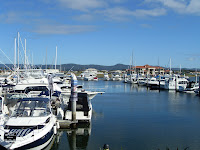There are a number of articles on websites and newspapers about the economic recovery and share markets.
Some economists focus on the following three numbers to determine the confidence of the world economy.
- Rate of economic growth ( higher than 3%);
- Unemployment rate ( lower than 4.5%) and
- The rate of inflation. (less than 3%)
There are other positive factors that should be looking at are:
- A slowing rate of decline in US housing prices
- US consumers spending to slow but not collapse
- A stabilisation in consumer confidence in key countries
- An easing in bank lending standards
- An improvement in money markets
- A fall in private sectors borrowing rates
- A stabilisation in global trade indicators &
- A stabilisation/improvement in China's growth.
Regarding the share markets, analysts are having different views of the market related to the economic recovery. Some predicted that the markets would be moving up before the end of the recession but others oppose this view. However they have listed two important factors to watch for the possibility of the end of the bear market.
Capitulation is the first factor to look at. Capitulation is when investors give up on stocks. Stocks are a bad investment and there is mass selling over a short period of time. When real capitulation arrives, few will recognise it and ring the bell. It's when there are no sellers left in the market and only exhaustion. The only problem is that it is very hard to pick the bottom. One fact is that prices are at a very low P/E so perhaps for the very brave it's time to start accumulating. Just don't expect the bumpy road to be over.
Volatility is another indicator of the end of bear market. Extreme levels of volatility are usually associated with turning points in the markets and not in trend continuation.
So it may be wise to stay out of the market until the economy is starting to move up or perhaps at end of next year.



